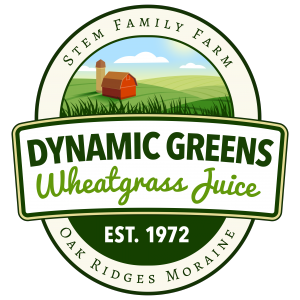As superfoods go, nothing compares to fresh, organic wheatgrass [1]. For cancer prevention, detoxification, and more energy, it’s the real deal. If you are already consuming wheatgrass regularly as part of your Healthy Breast journey [2], that is great! There are a few things you should know, however, about your wheatgrass source that may help you keep the toxins out and the good stuff in.
Wheatgrass: A Quick Review
 Before we dive into the latest research, let’s take a quick tour of some of the nutritional highlights of this amazing plant:
Before we dive into the latest research, let’s take a quick tour of some of the nutritional highlights of this amazing plant:
Chlorophyll: Wheatgrass is often called “green blood” [3] because of its high concentration of chlorophyll. Its levels are close to that of hemoglobin, a protein substance that is necessary for transporting oxygen through the blood. Many studies have found that chlorophyll can negatively affect carcinogenic bioavailability [4].
Antioxidants: According to studies [5], wheatgrass contains a higher antioxidant content than most vegetables.
Vitamins and Minerals: Wheatgrass is high in many key vitamins such as C, D, and A as well as key minerals such as calcium, selenium, and magnesium. It also contains B17 (amagdylin [6]).
Amino Acids: Wheatgrass contains many key amino acids [7], which are the building blocks of protein.
“Live” Enzymes: Because it is consumed raw, the enzymes in wheatgrass are still active and able to carry out their job of breaking down and assimilating nutrients via the digestive system.
Latest Research on Wheatgrass
The last few years have been very busy for forward-thinking researchers who are investigating the healing potential of wheatgrass. Here are a few of the latest discoveries that either directly or indirectly relate to cancer:
-A 2016 study [8] published in the Journal of Nutritional Biochemistry discovered that the bioflavonoid kaempferol found in wheatgrass (as well as in matcha tea [9]) had an anti-cancer effect on breast cancer cells caused by xenoestrogens. These same findings were confirmed by researchers at Chungbuk National University [10] in Korea.
-A July 2017 study [11] published in the journal Phytonutrient Therapy found that the polysaccharides in wheatgrass had significant anti-inflammatory effects, in part through how wheatgrass helps to balance gut bacteria [12].
-Another 2017 study [13] published in the journal Nutrition Research and Practice reported that wheatgrass inhibited a process called EMT (Epithelial-Mesenchymal Transition [14]), which is one of the ways that normal cells become invasive.
-Finally, an interesting study [15] done on South African women this year found that wheatgrass consumption significantly reduced symptoms of menopause as well as lowered the levels of atherogenic lipoproteins (DLDL or very-low-density lipoproteins) after just ten weeks of use.
Mold and Gluten Contamination Found in Most Wheatgrass
 You may already be consuming wheatgrass by growing it on your own or by going down to your nearby café to get your daily “shot.” Along with all the nutrients, however, you could also be ingesting mycotoxins and small amounts of gluten caused by cross-contamination.
You may already be consuming wheatgrass by growing it on your own or by going down to your nearby café to get your daily “shot.” Along with all the nutrients, however, you could also be ingesting mycotoxins and small amounts of gluten caused by cross-contamination.
First, let’s discuss mold. The majority of wheatgrass that is grown indoors in trays will have some amount of “white mold” contamination. Many individuals will claim that this kind of mold is benign. Other experts, on the other hand, have connected the presence of mold to the nausea and dizziness that sometimes occurs when a person consumes wheatgrass. There are many kinds of white-colored mold and it is very difficult to determine if the kind growing on your wheatgrass is a mycotoxin.
Secondly, there is the issue of gluten contamination. Technically, wheatgrass is a “gluten-free” food. This is because gluten is produced by an enzymatic process that includes the actual grain. Since wheatgrass juice comes from very young grass, not grains, it contains no gluten. However, for some individuals that have severe conditions like Celiac Disease, there have been issues with equipment cross-contamination between wheatgrass seeds and cut grass in establishments that do not check for this.
Choose Only the Best
For the reasons mentioned above, you must choose products that adhere to the highest standard of quality. The only wheatgrass company I recommend to my clients is Dynamic Greens. [16]The reason is quality. They test their product for gluten so they can ensure that no cross-contamination exists with each batch. In addition, their wheatgrass is grown in fields outside, which was how nature intended. Thus, there is absolutely no threat of mold contamination. Their product is fresh, slightly sweet, and super-energizing. You can feel the difference right away! I receive my Dynamic Greens [16] wheatgrass in frozen “cubes” that I consume daily.
Would I suggest adding wheatgrass to the list of “must haves” for your Healthy Breast toolbox [2]? You bet, as long as it comes from a quality source like Dynamic Greens [16]. If you drink an ounce or two every day, you will feel the gift of energy and vitality that these humble grasses will give you!
